Reviews
Michael Findlay
USA, 1974
Credits
Review by David Carter
Posted on 19 October 2012
Source DVD
Categories 31 Days of Horror IX
When the first European settlers arrived in North America they brought a rich tradition of folklore. The import of such mythology meant that vampires and werewolves would have a place in the fears of the new world. Unbeknownst to these settlers, however, was the knowledge of a hirsute and evasive creature lurking in the wilds of what would become the United States and Canada: the Sasquatch. Known under a variety of regional names but commonly called “Bigfoot,” the creature, according to native North Americans, was either a ferocious predator or a gentle nature spirit, but all concurred on the beast’s inherent elusiveness. Sightings of the creature date into the 1800s, but a debate persists as to what Bigfoot actually is: the fabled “missing link,” an undiscovered species of ape, or simply an endless stream of misidentifications and hoaxes. What is certain is that as one of the only monsters indigenous to North America, the Bigfoot has been woefully underrepresented in American horror cinema. On Fridays throughout the coming month we’ll be taking a look at some of the high and low lights of Sasquatch cinema.
Sasquatch films have historically been as rare as sightings of the beast itself, thus it is a horror subgenre only in the loosest sense of the term. Save for The Legend of Boggy Creek, no entry was particularly commercially or critically successful. Thus the genre has flown under the radar since its initial and brief proliferation in the seventies. No Bigfoot film is considered an “essential” work of the horror pantheon, but there is one - 1974’s Shriek of the Mutilated - that has consistently garnered attention, although none of it positive and for reasons other than its cryptozoological subject matter.
Shriek of the Mutilated was made by Michael Findlay (director) and his wife Roberta (cinematographer), one of the most infamous filmmaking duos of the sixties and seventies. The Findlays were largely responsible for the birth of sixties sexploitation in New York City along with Joe Sarno, et al., but the pair’s specialty were “roughies”: sexploitation films that presented sex and violence in equal measure. Their Flesh trilogy marked the end of their sixties roughie cycle, and they shifted focus to more straightforward exploitation films. One of the first of these was an unreleased quickie cash-in on the Manson Family murders, Slaughter, later made infamous when reworked into Snuff by producer Allen Shackleton in 1976. After a brief detour in hardcore pornography, the Findlays made Shriek of the Mutiliated, a film overshadowed by Snuff but one that actually surpasses that more notorious film in terms of transgressive content.
Shriek of the Mutiliated is the story of a trip to investigate Yeti sightings by Professor Ernst Prell and his graduate students, Tom, Lynn, Keith, and Keith’s girlfriend, Karen. The Yeti is Prell’s pet project - actually, obsession - and rumors that a previous expedition ended in disaster frightens the students. At the expedition site upstate, the students are introduced to Prell’s collaborator, Dr. Werner, and his imposing Native American manservant, the mute Laughing Crow. Werner gives Prell the welcome news that he has seen and heard the creature in the area recently, and the team begins their hunt early the next morning. Tragedy strikes the group almost immediately as Tom is attacked by a hulking monster with shaggy white hair. The remaining team learns of his fate much later, after a day of searching only finds Tom’s partially eaten leg.
Prell’s obsession with the Yeti determines that the expedition must continue, despite vociferous protests from Karen. The others agree to continue on, and Lynn is the next to fall victim to the Yeti. The surviving group is now faced with the harrowing possibility that they too will die and decide to undertake a drastic, previously unthinkable tactic in a last ditch effort to capture the creature. The group attempts to lure the Yeti into a trap using Lynn’s corpse as bait. This too fails; the Yeti escapes, the group is scattered, and Keith is knocked unconscious. Karen is attacked by the Yeti after returning to the safety of the lodge, but dies of fright before the beast can kill her.
Shriek of the Mutiliated’s final act is the one that earned it the most derision and is simultaneously one of the more bizarre seen in early seventies horror and, although it is a “surprise twist,” no analysis of the film would be complete without addressing it. Once Keith awakens, he learns the truth about the Yeti, Drs Prell and Werner, and their plans for Karen. The beast he’s been tracking is in reality the doctors in costumes, made to seem more realistic by hidden speakers emitting grunts and cries. Prell and Werner are members of an elite group of Satanists who gather on certain occult holidays for cannibalistic feasts. A body that has died of fright is considered a delicacy, and Karen is slated as the main course. Keith arrives too late to stop the proceedings and upon confronting Prell he is shocked to learn that he was being groomed to join their group. He refuses and dies at the hands of the cannibals, who survive the film’s climax to continue their evil indefinitely.
Shriek of the Mutilated was called “a Grade Z movie bordering on amateurish” by John Kenneth Muir in his indispensable Horror Films of the 70s. This is a fitting assessment of the film’s technical merits, and, honestly, could be used to describe any of the Findlays’ work. It is wrong to consider them inept filmmakers - on the contrary, both were talented directors - although they were cheap even by grindhouse standards, and it is this cheapness of production that is Shriek of the Mutiliated’s biggest flaw. The film’s conceptual strength is enough to overcome the low-budget production, and the Findlays’ penchant for transgressive concepts is displayed fully here.
The barebones production adds a metaphoric dimension that would be absent had the film been more polished. The Yeti looks like a man in a painted gorilla suit and, narratively, that is ultimately exactly what it is. Instead of employing the traditional horror format of delaying the full reveal of the monster until the film’s climax, Shriek of the Mutiliated opts to show its Yeti early and often, frequently in broad daylight. Thus the film avoids an anti-climactic finale, a shrewd decision on the Findlays’ part. The Yeti is not the ultimate villain of the film, the cult is, and this dramatic shift in focus has been pointed to as a mistake by some viewers and as the film’s highpoint by others. Shriek of the Mutiliated is simply moving from one urban legend to another—from Bigfoot to occult cabals. Both concepts have those who insist these boogeymen are real, and an equal number who dismiss them as fantasy.
As a work of Sasquatch cinema, Shriek of the Mutilated is one of the few to address the issue of hoaxing directly. Hoaxes are the specters that hang over all paranormal research, particularly Bigfoot studies which are hindered by the ease with which footprints, for example, can be faked. The hoaxing charge has been leveled against all major evidence presented for the existence of Bigfoot, and even Robert Gimlin of the Patterson-Gimlin film fame was unsure that he himself had not be the victim of a hoax perpetrated by his partner. Shriek of the Mutilated’s Yeti’s white and brown color is in keeping with Bigfoot reports. Despite the conventional wisdom that the beast is brown, Bigfoot witnesses have reported a wide range of colors including blonde and gray. Lastly, a word on nomenclature: Shriek of the Mutilated incorrectly refers to its creature as a Yeti. Yetis are exclusive to the Himalayas, and the film’s American setting means that the creature depicted is a Sasquatch. It is understandable why the Findlays chose to refer to their creature as a Yeti: it bears an uncanny resemblance to the Abominable Snow Monster from Rankin-Bass’ 1964 Rudolph, the Red-Nosed Reindeer.
Shriek of the Mutilated emerges as the most notorious of the Sasquatch cinema films, often earning mentions in critical studies of early seventies horror but again only in derisive terms. The film has flaws, and these are unfortunately magnified when compared with other low-budget horror successes from 1974 like Black Christmas, It’s Alive!, and that more famous cannibal film from that year, The Texas Chain Saw Massacre. Shriek of the Mutilated shows just as much originality as those more notable films, however, incorporating elements of proto-slasher cinema, social commentary, and urban legends as the aforementioned do, respectively. Its status as a legitimate part of Sasquatch cinema may be debatable because of the hoax aspects and twist ending, but its placement as a still-vital piece of grindhouse history and the Findlays’ finest work is unquestionable.
More 31 Days of Horror IX
-
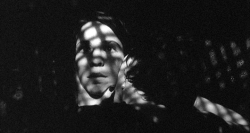
The Addiction
1995 -

Psycho III
1986 -
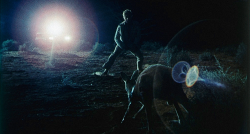
Wake in Fright
1971 -

Blacula
1972 -

Big Foot
1970 -
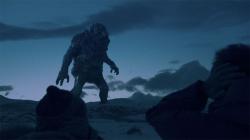
Trollhunter
2010 -
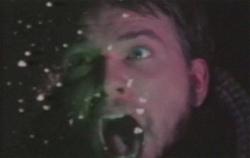
Invasion from Inner Earth
1974 -

In the Company of Men
1997 -
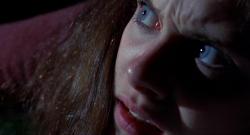
Happy Birthday to Me
1981 -

I Drink Your Blood
1970 -
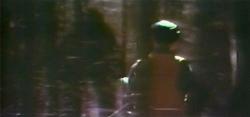
The Legend of Boggy Creek
1972 -

Maximum Overdrive
1986 -
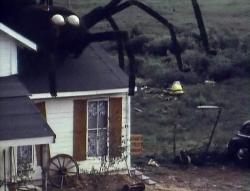
The Giant Spider Invasion
1975 -

Ganja & Hess
1973 -
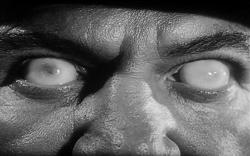
Not of This Earth
1957 -

Let’s Scare Jessica to Death
1971 -
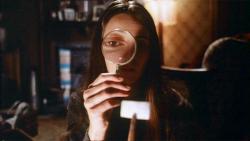
Next of Kin
1982 -
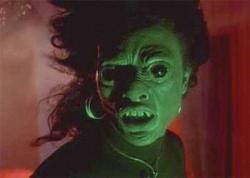
Def by Temptation
1990 -
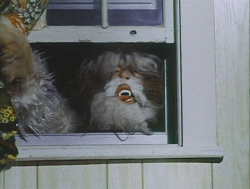
Shriek of the Mutilated
1974 -
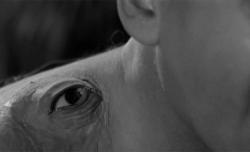
The Manster
1959 -
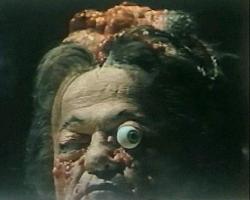
The Alpha Incident
1978 -
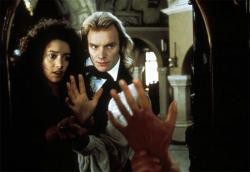
The Bride
1985 -
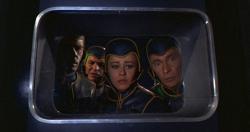
Planet of the Vampires
1965 -

The Hole
2009 -

Vampire in Brooklyn
1995 -
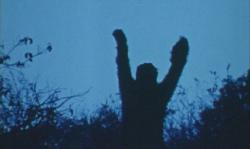
Sasquatch: the Legend of Bigfoot
1977 -
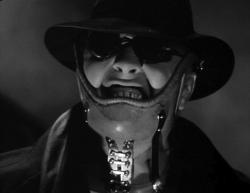
Mad Love
1935 -
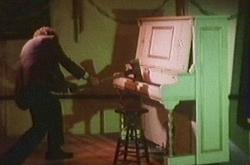
The Demons of Ludlow
1983 -

Habit
1997 -

Elephant
1989 -
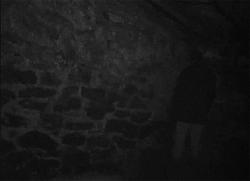
The Blair Witch Project
1999
We don’t do comments anymore, but you may contact us here or find us on Twitter or Facebook.



